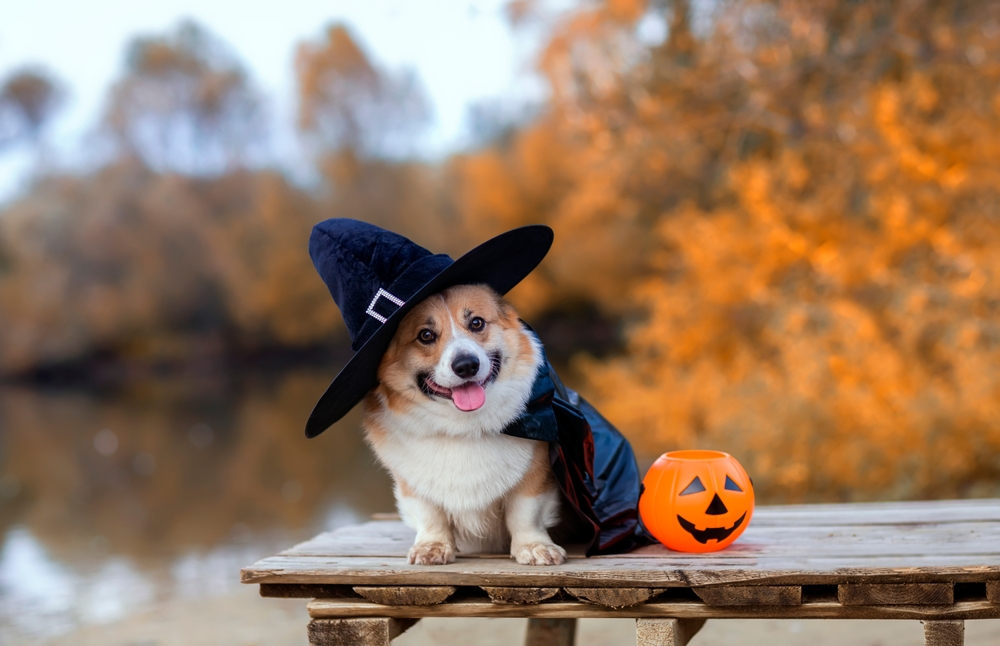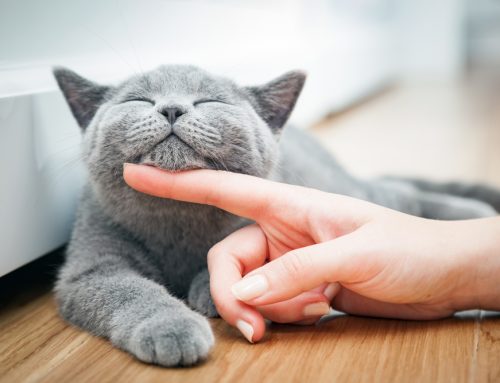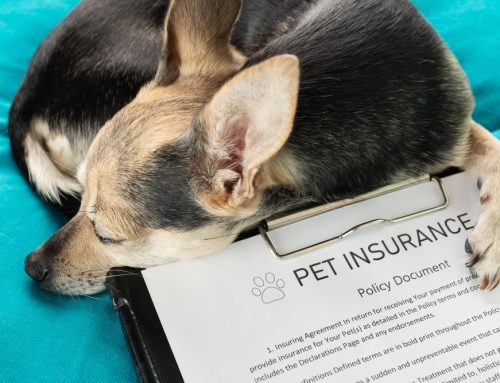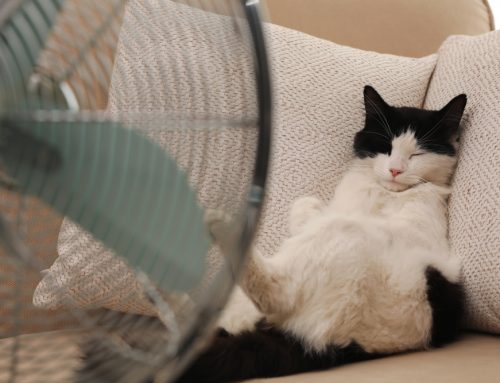Your pet may be the ideal size and have the positive demeanor needed to sport a silly costume, which likely makes Halloween an extra enjoyable holiday for you. Most costumes are fun and benign, but they can become dangerous if they fit poorly or if your pet doesn’t tolerate wearing clothes. Candy and decorations are additional major Halloween hazards that can put your pet in harm’s way. To prevent your pet from experiencing a Halloween health emergency, read our Parker Center Animal Clinic team’s guide and find out our answers to your frequently asked questions (FAQs) regarding this spooky holiday’s hazards.
Question: Is Halloween candy safe for pets to eat?
Answer: Never share Halloween candy with your pet or allow your children to stash their candy in an area your pet can reach. One or two pieces might not cause a big problem, but we all know that pets usually keep eating until every last piece is gone. A candy’s danger depends on its ingredients. Many candies’ ingredients are safe for people but toxic for pets such as chocolate, xylitol, and raisins. Chocolate toxicity signs range from mild gastrointestinal (GI) upset to seizures and death, depending on a pet’s size and the amount they consume. Xylitol is common in sugar-free gums and candies but the ingredient can cause a pet to experience a severe blood sugar drop, and raisins can lead to kidney failure.
When a pet eats too much candy, even if it’s nontoxic, they will likely experience vomiting and diarrhea, and they can develop severe pancreatic inflammation. If your pet eats candy wrappers and other packaging, the material can become lodged in their intestinal tract, and your veterinarian will have to perform surgery to remove it. Contact the American Society for the Prevention of Cruelty to Animals (ASPCA) Animal Poison Control Center, the Pet Poison Helpline, or your nearest veterinary emergency hospital if your pet eats Halloween candy and/or wrappers.
Q: How can I choose the safest costume for my pet?
A: A costume that will be safe for your pet should be made of soft, breathable materials and ideally be constructed as one single piece. Ensure your pet’s Halloween costume is not too loose because the garment may cause them to trip or entangle their legs. In addition, the costume should not be too tight because it may cause breathing difficulties or hinder their mobility. A small add-on piece, such as a hat, may tempt a chewer, so either skip these accouterments altogether or closely supervise your pet when they are in their Halloween costume.
Q: How can I keep my pet calm on Halloween?
A: Stress and anxiety are common Halloween pet problems. Your cat may run and hide in response to the constantly ringing doorbell, and your dog may bark territorially or become overexcited to welcome visitors. If one of these behaviors describes your pet, consider avoiding trick-or-treaters altogether. Stay inside with your pet in a safe, quiet room and play soothing music or watch TV with them. Put a sign over the doorbell and a bowl of candy on the porch, so that passers-by can help themselves to a treat without disturbing your pet’s peace. If your pet has extreme stranger anxiety, the behavior may increase along with your neighborhood’s activity, despite your best efforts. To help your pet cope, our Parker Center Animal Clinic veterinary team can prescribe anti-anxiety medication to your pet.
Q: Will my pet try to eat the jack-o’-lantern?
A: Carved pumpkins and corn stalks may tempt a pet who is craving a snack, which could lead to stomach upset or an intestinal blockage, landing your furry pal in the emergency veterinary hospital. Other decor items, including those with cords, candle flames, or spiderwebs, may be equally tempting, and they can potentially burn, shock, or otherwise injure your furry pal. To prevent Halloween decorations from tempting your pet, which could lead to a major veterinary bill, keep these items out of their reach.
Q: How can I ensure my pet’s safe return if they get lost on Halloween?
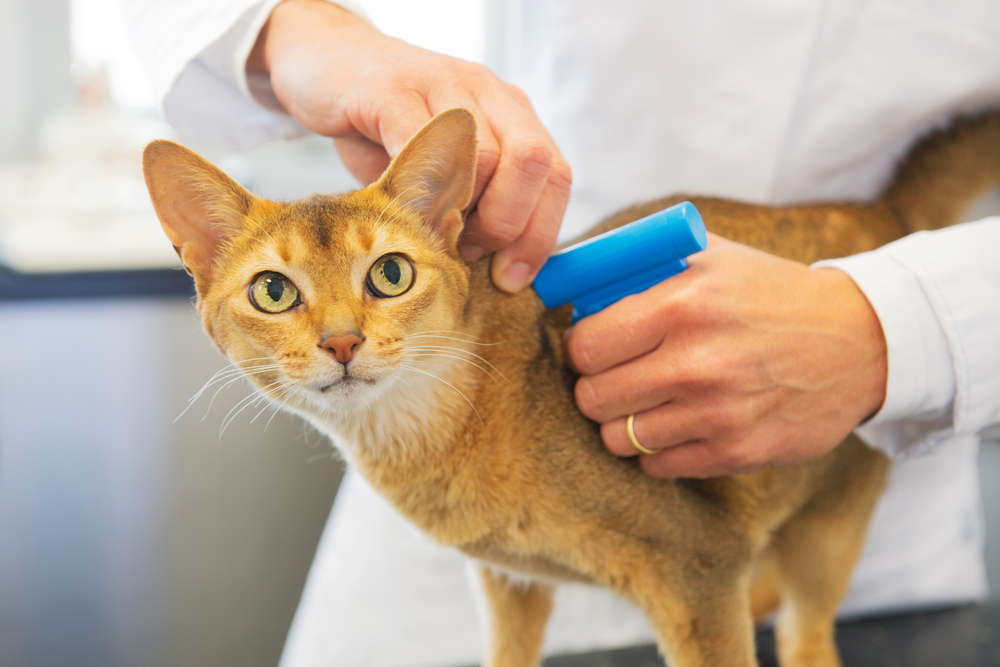
A: Some pets see an open front door as an invitation to run outside to either chase the trick-or-treaters or run away from the frightening crowds. A pet wearing a collar and an up-to-date identification (ID) tag can be returned home quickly and safely if a neighbor catches them. However, a pet wearing no identification may never return home. In addition to an ID tag, your pet should have an implanted microchip that provides a permanent identifier for an animal who ends up in a shelter, police station, or veterinary hospital. These facilities’ staff can scan a pet’s chip and access your contact information.
Holidays, such as Halloween, can be stressful for your four-legged friend, who may be frightened by the unfamiliar sights, sounds, and visitors. Candy, costumes, and the threat of becoming lost are other hazards your pet may encounter this fall. To help prevent your furry pal from getting into too many shenanigans and needing urgent veterinary care, consider following our Parker Center Animal Clinic team’s responses to your Halloween FAQs. Schedule your pet’s quick and easy microchipping appointment to help ensure you and your furry pal can be reunited if they bolt out the open door when you are greeting trick-or-treaters.


